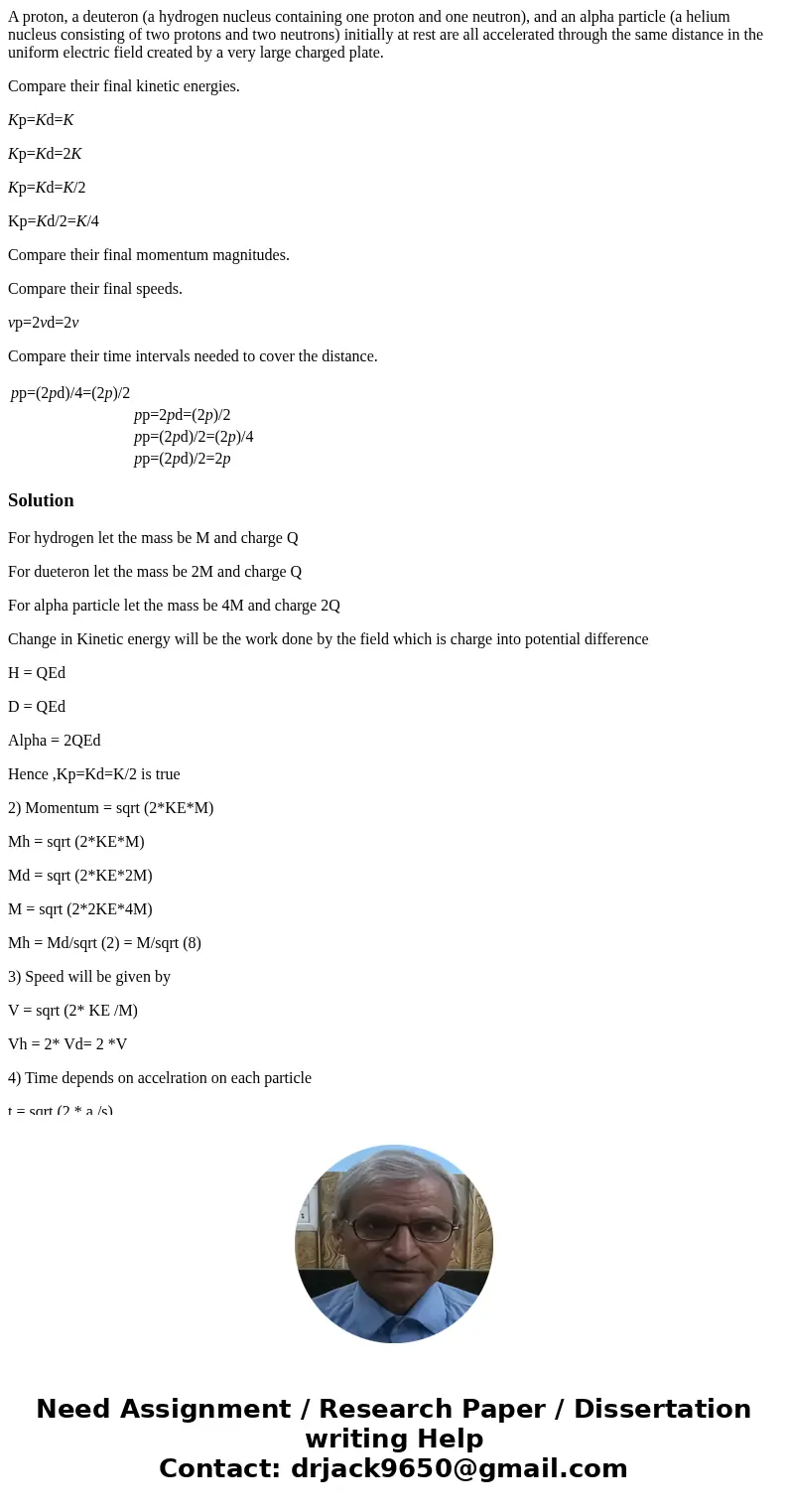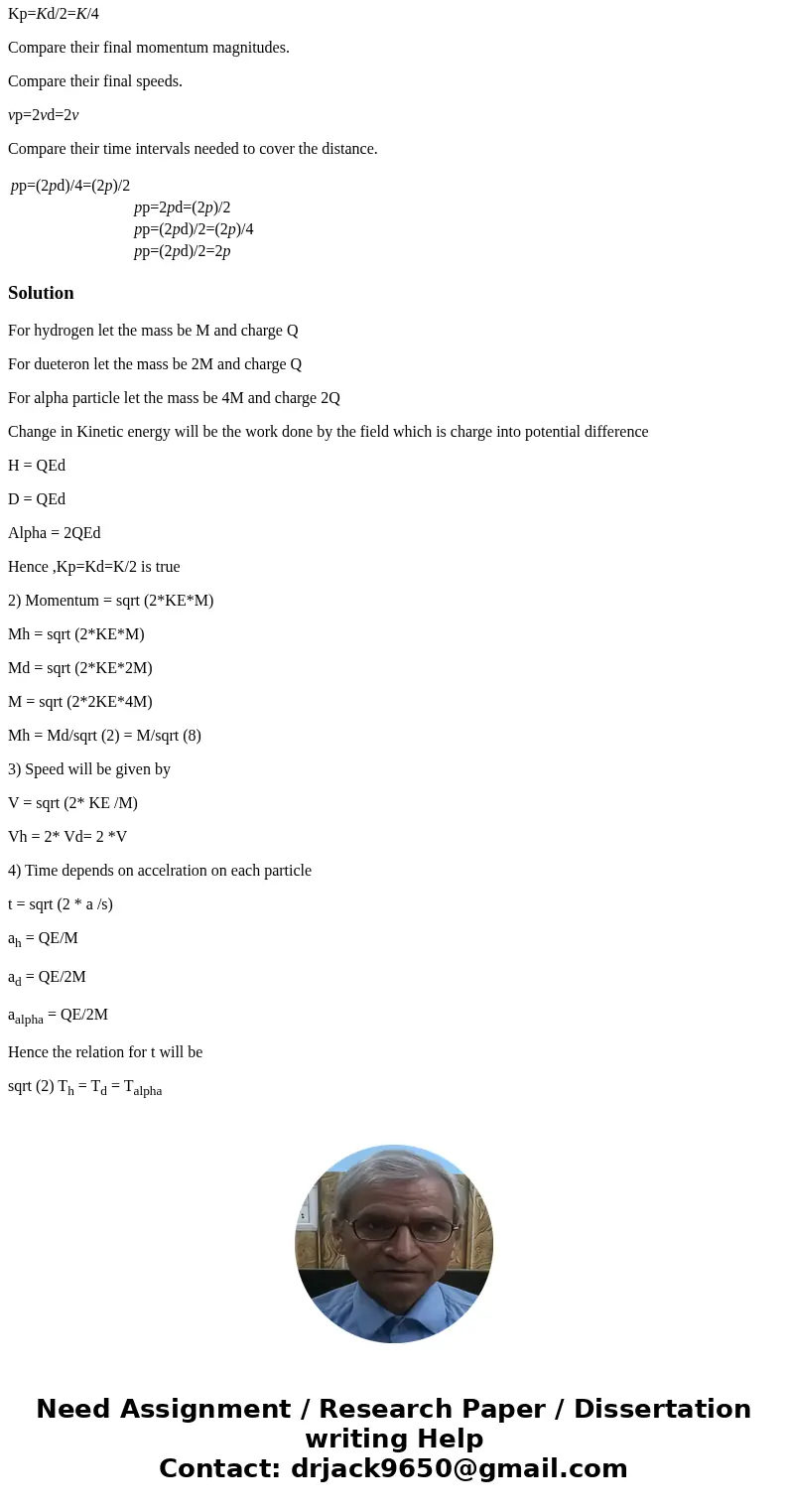A proton a deuteron a hydrogen nucleus containing one proton
A proton, a deuteron (a hydrogen nucleus containing one proton and one neutron), and an alpha particle (a helium nucleus consisting of two protons and two neutrons) initially at rest are all accelerated through the same distance in the uniform electric field created by a very large charged plate.
Compare their final kinetic energies.
Kp=Kd=K
Kp=Kd=2K
Kp=Kd=K/2
Kp=Kd/2=K/4
Compare their final momentum magnitudes.
Compare their final speeds.
vp=2vd=2v
Compare their time intervals needed to cover the distance.
| pp=(2pd)/4=(2p)/2 | |
| pp=2pd=(2p)/2 | |
| pp=(2pd)/2=(2p)/4 | |
| pp=(2pd)/2=2p |
Solution
For hydrogen let the mass be M and charge Q
For dueteron let the mass be 2M and charge Q
For alpha particle let the mass be 4M and charge 2Q
Change in Kinetic energy will be the work done by the field which is charge into potential difference
H = QEd
D = QEd
Alpha = 2QEd
Hence ,Kp=Kd=K/2 is true
2) Momentum = sqrt (2*KE*M)
Mh = sqrt (2*KE*M)
Md = sqrt (2*KE*2M)
M = sqrt (2*2KE*4M)
Mh = Md/sqrt (2) = M/sqrt (8)
3) Speed will be given by
V = sqrt (2* KE /M)
Vh = 2* Vd= 2 *V
4) Time depends on accelration on each particle
t = sqrt (2 * a /s)
ah = QE/M
ad = QE/2M
aalpha = QE/2M
Hence the relation for t will be
sqrt (2) Th = Td = Talpha


 Homework Sourse
Homework Sourse